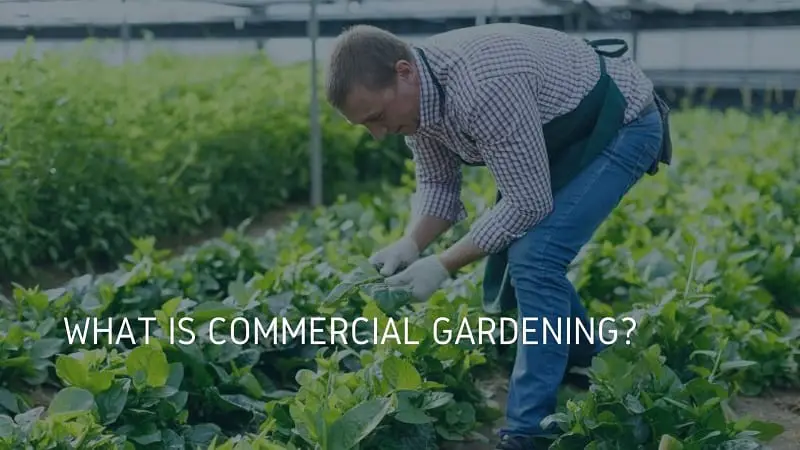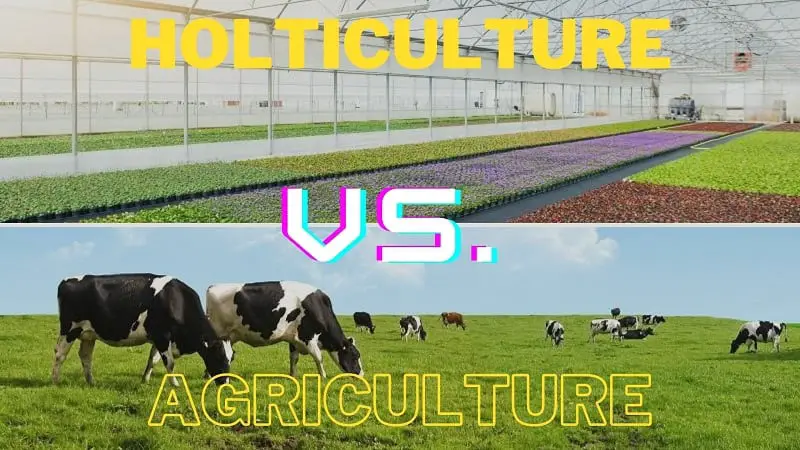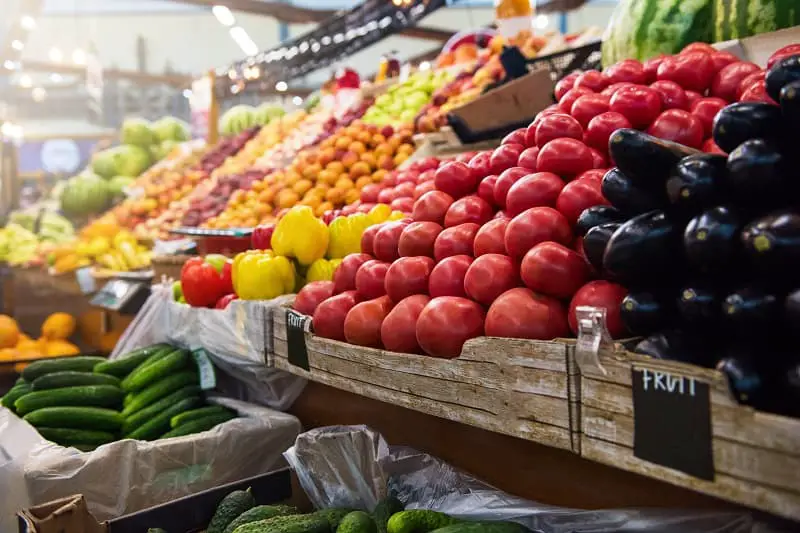Commercial Gardening And Fruit Farming
Family Food Garden may collect a share of sales or other compensation from the links on this page.

Living life in the suburbs or nearby rural areas can be an idyllic existence with space to do all the little projects we have dreamed of. For many of us, having a small parcel of land immediately conjures up our aspirations to have a garden and grow our own food.
One of us remembers years ago having a deep city lot and ambitiously putting in a sizable garden. This involved going to the local hardware store, renting a rototiller, turning bags of peat and potting soil into the topsoil, planting, and hoping for the best.
That decision to plant a lot of tomatoes, because we like tomatoes so that even if the plants do not flourish, we will have enough tomatoes, is well-remembered. Well, it was a hot and humid summer that year and we had tomatoes, lots and lots and lots of tomatoes.
After canning all we could, making endless ragouts and buckets of salsa, eventually, we had to start hauling grocery bags full of tomatoes into the office to "share" with our colleagues because we just could not bear the thought of throwing those little red beauties out. Eventually, even our office mates got tired of tomatoes.
If this has ever happened to you, what you have is the makings of a commercial garden. Commercial gardening involves the production of fruits, vegetables, and ornamental crops on small plots of land.
Commercial gardening for the production of food or ornamental crops (horticulture) is basically an American term. From the other side of the pond, commercial gardening refers to professional groundskeeping and not a production of melons and radishes. So henceforth we will refer to it as market gardening, which is the more commonly-used term (you will also hear it referred to as truck farming).
When you go to a farmer's market mid-week to buy fruits and vegetables or see some of their nice potted plants for the windows in your salon, most of those sellers are market gardeners producing from small plots of land ranging from under an acre to a few acres. Some of them may even use greenhouses (a.k.a., hothouses, winter gardens) to grow their crops, but all of this is done on a small scale for production and sales.
Horticulture vs. Agriculture

Growing crops in horticulture and growing crops is agriculture. Both sound the same, so is there a difference?
The differences between horticulture and agriculture mainly involve the concepts of scale and variety. Horticultural plots are smaller-scale efforts that may or may not involve draft animals or machinery (more typically, not), whereas agricultural cultivations are produced on a much larger scale and typically require draft animals or machinery (or a very large human labor force).
Variety comes in play in differentiating between the two in that agricultural cultivations are typically crop-monolithic or involve only a few crops, and crop harvest is during a brief interval of time at the end of the growing season. In contrast, horticultural plots typically involve the planting of a wider variety of different crops which reach maturity at different times of the year, thereby making the plot yield produce over a broader range of time during the growing season.
The "Market" Outlook
The growth market for agriculture-related industries is projected to be stagnant or decline due to increased efficiency resulting from better operations, mechanization, and the boost of chemical inputs. For small farmers increased costs of agrochemicals plus increased regional market pressures, and competition with larger commercial farms will likely result in a heavy selection process which will leave a few small farm operators as survivors.
There is a silver lining in all of those predictions since niche markets and long-term trade disruption are not taken into account when simulating these projections. One of those emerging niche markets with projected growth in horticulture and organic food farming according to the US Bureau of Labor Statistics.
When you ask any consumer whether they would prefer a vegetable grown on an industrial farm where a plethora of chemicals was used in its production or whether they would prefer the same vegetable grown on an organic farm with only manure for about the same price, seven times out of ten they will choose the organically-grown produce.
This trend toward favoring organic produce is also increasing as production volume of organic products increase and unit costs come down to levels comparable to or equal to produce from industrial agricultural farms.
As a growth market, the Organic Trade Association's 2019 industry survey reported an annual sales volume of $55 billion in the United States, double to the volume from a decade ago. The footprint of organic food products in commercial groceries is also becoming a predominant feature in close to 80% of stores as consumer demand grows and resellers adjust their inventories to match.
With these market trends as a backdrop, trade distribution network disruptions, such as we have seen lately with a global viral pandemic, have reshifted the focus of farm-to-market sales to increasingly emphasize locally-grown produce. This trend was already in development as consumers became more aware of the need to buy locally and support their farming neighbors.
Investing in your local community and knowing from whom you buy your fruits and vegetables is deeply satisfying to many people. The interest in providing food for your family this way has resulted from a gradual social transformation in how people conduct business, with a focus on doing things locally.
These changes provide an ample market for the growth of market gardening, particularly if production emphasizes the use of organic farming techniques. There has also been a growth in urban and suburban food co-op's, which connect customers with local growers and provide the market gardener with a dedicated customer base and repeat sales.
Another niche area to consider is providing locally-grown organic produce for restaurants as exclusive customers. Many restaurants now tend to buy locally and advertise this fact openly to their customer base to attract new diners, emphasizing their role as a local eatery supporting local farms.
With regard to profit margins, growers who sell their products through wholesalers typically must sell at about 10% (or as much as 20%) of the resell value of their products. However, market gardeners who sell directly to consumers through co-op's or farmer's markets typically earn close to 100% of the retail sales value.
On an investment return per acre basis, industrial farmers typically see returns in the hundreds of dollars per acre, although this can vary widely based on the commodity value of their produce. In contrast, market gardens are a more efficient use of space and growers usually see returns in the neighborhood of up to $20k or more per acre with an established customer base.
Starting Your Own Market Garden Business

If you have some land and have aspirations of becoming a market gardener, there are a few particulars you need to look into before you begin the journey. Taking care of these details, in the beginning, will save you the hassle of needing to change your strategy later and save you some disappointment.
"Market" Research
The first thing you should invest time into doing is market research for your market garden. Before laying out plots and purchasing seeds, you should investigate where the demand lies in your local geographic area.
If people in your area are not into purple hull peas, despite your property being ideally suited to growing them, then that crop is not a good choice. Remember, you will be selling locally so see what local people want before planting.
Go shopping at the local farmer's market and observe which booths seem to do the most business. Compare those booths with others to see what differs.
Maybe it is the prices, maybe it is the types of produce offered. Determine what makes those booths successful and you will have some insight into what crops to grow.
Alternatively, you may find that only one booth at a farmer's market sells a particular type of produce, but that farmer usually sells out all the fruits or vegetables that they bring to the market. This can be a strong indication that there is consumer demand, but the supply is limited to only one local grower and suggests a market niche into which you could enter successfully.
Another approach is to speak with the produce manager at your local supermarket. Ask them what fruits or vegetables tend to be in the highest demand by their customers or, alternatively, what produce is frequently requested by consumers for which there is a limited supply.
These can be important clues as to what you should try to grow.
Read Related Topic: Best Gardening Books- Beginner to Market Gardener
"Plot" Development
Selecting a location to begin your market garden is the first major step in the business development process. If you do not have room on your own property, an option to overcome this hurdle can be in the form of purchasing an empty lot or obtaining a land lease.
Some considerations you should review when surveying a potential land plot are the overall costs of purchase or rent and whether you will be required to pay property taxes (which can vary based on land use and zoning). A vitally-important consideration is whether the plot has easy access to water.
Proximity to your home should also be a consideration in your decisions. During the growing season, you will need to visit the plot daily for maintenance.
If you find difficultly in obtaining open plot space in your location, there are alternative solutions to food production that can provide enough volume for a viable market garden. For example, basements, unused portions of an industrial building, or even commercial shipping containers can be used for indoor gardening to produce salad greens or mushrooms either in soil or hydroponically (not for mushrooms).
Planning Production
For market gardens to be profitable, their production schedule must be carefully maintained to establish regular harvesting dates and predictability of harvest volume. This is particularly important if the market gardener has established a contractual arrangement to provide produce for local restaurants.
Understanding the growth characteristics of the crops you plant, for example, degree days to maturity, and establishing staggered planting dates are vital factors for profitability so that predictable harvest dates are regular and evenly spread out over the growing season.
Typically, the first year of growth can be a bit chaotic until you gain a feel for the performance of different crops in your plot. During the second and subsequent growing years, you will gradually become accustomed to the tempo of your garden and will be able to comfortably predict its growth performance patterns.
Breaking Ground
Preparing your plot for planting will take some effort to ensure good performance. Think of it like doing proper drywall work before painting and not just going in to slap on a coat of paint.
If the drywall has problems (moisture, crumbling, etc.), your paint job will only look nice for a little while until it will be necessary to tear into the wall and rebuild it. Preparing your plot for planting is much the same way, since taking some time to do it the right way before you plant will save you a lot of expensive headaches later.
If you have a wild plot of land that is full of weeds, there are several approaches to eliminating them so they do not compete with your crops. One method involves tillage and one does not.
We caution against the use of herbicides in controlling your weed problem in the outset, since these chemicals will also affect certain types of crops and can be persistent in the soil for some time, which will stunt (or in some cases prevent) crop development.
Most growers will tend to rent or purchase a rototiller to turn the soil, break up plant roots, and incorporate peat or mulch into the topsoil. Keep in mind that tillage disturbs topsoil, however, if the soil quality in your plot is very poor from either past surface erosion, mechanical removal of the topsoil, or over-cultivation, tilling organic material into your soil before first planting can be a good choice.
Before tilling, make sure you locate any underground cables or pipes to prevent catastrophe. Breaking one of these will damage your tiller and you will incur additional costs for repair of the damaged utilities.
For longer-term weed control, you can either re-till every spring or employ no-till, no-dig permaculture methods of plot maintenance. These approaches require more initial work but are sustainable and more cost-effective in the long run.
A simple method for starters is to cover the plot with a plastic tarp between growing seasons (fall and spring; leave the tarp off in winter months) to kill weeds that overwinter. If you are going with a no-dig system, by arranging your planting rows in advance you can set your walkways between the rows and apply anti-weed controls to limit the space for weeds to take root.
One way of doing this is to dig down a bit and lay several sheets of cardboard, then top off with wood chips. This will effectively choke out any weeds in those walkway areas.
For the planting areas, a generous 10-15 cm layer of compost applied in the fall and covered with plastic over the winter will prevent most overwintering weeds or their seeds from reestablishment in your plot. It will also provide a great base to which you will plant your crop seeds in the spring.
Sounds Like Fun, But It's Still Hard Work
A bit of advice for would-be market gardeners. Before launching into a big endeavor, you also might consider working on another market farm in your area.
Valuable insights can be gained by watching their operation and you will also come to an understanding of whether or not you really want to do this as a business. Having direct experience in working a large garden plot is very important for early success since most businesses that fail tend to do so in their first year.
You May Also Like: Grow a Permaculture Garden (Less Work + More Yields)
Commercial Gardening And Fruit Farming
Source: https://www.familyfoodgarden.com/what-is-commercial-gardening/
Posted by: greengandurs.blogspot.com

0 Response to "Commercial Gardening And Fruit Farming"
Post a Comment